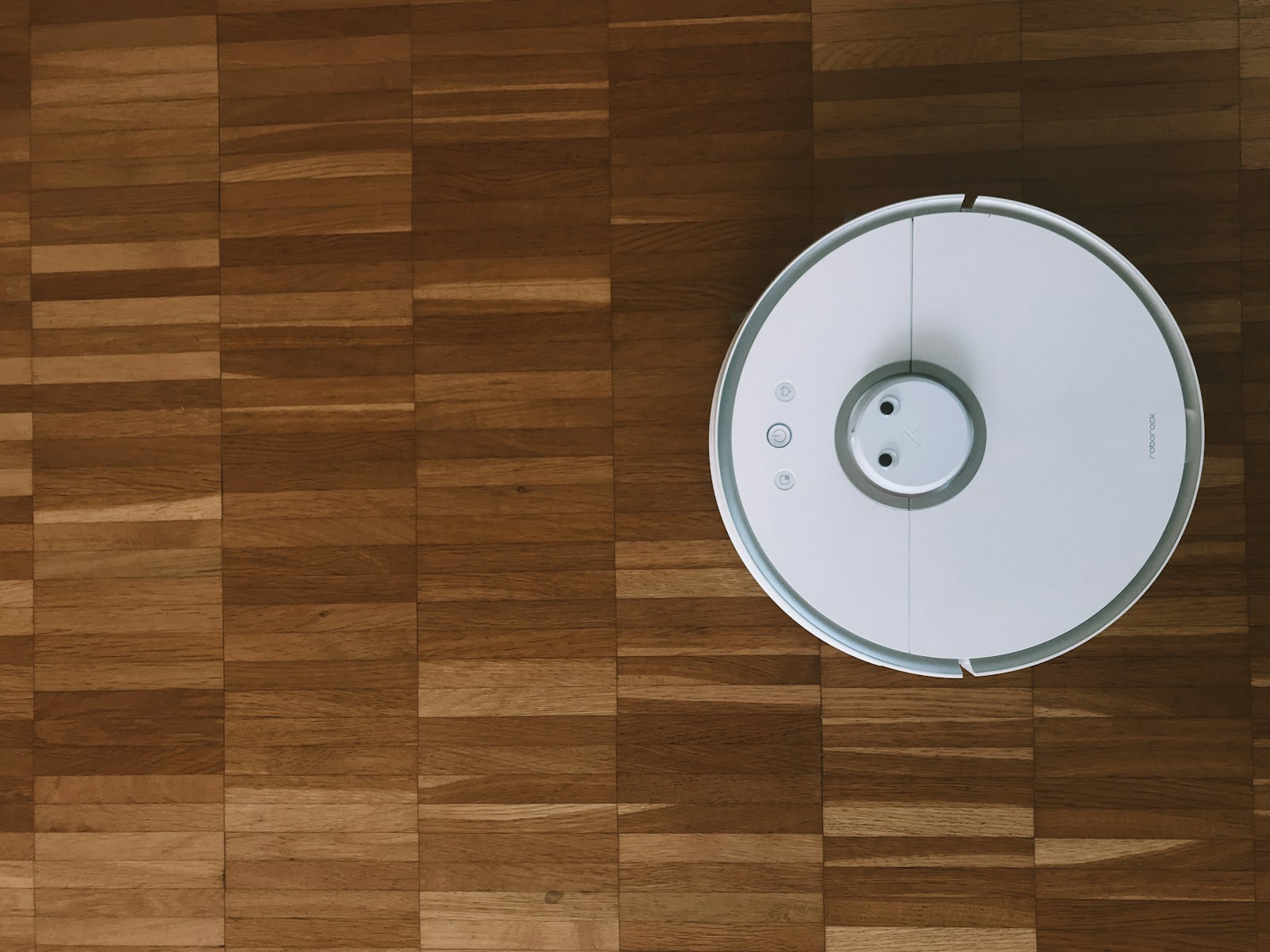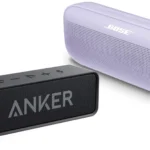Robot vacuums have revolutionized home cleaning, offering convenience and efficiency. These smart devices navigate your floors, picking up dirt, dust, and debris with minimal effort on your part. The best robot vacuum for you depends on your specific needs, floor types, and budget.
Choosing the right robot vacuum requires consideration of several factors. Suction power, measured in pascals (Pa), is crucial for effective cleaning. Models like the Roborock S8 MaxV Ultra boast impressive 10,000Pa suction, tackling even stubborn dirt and pet hair. Battery life, navigation technology, and smart features also play important roles in determining a vacuum’s performance and usability.
Many modern robot vacuums offer additional features like mopping capabilities and self-emptying dustbins. The Shark PowerDetect 2-in-1, for example, combines vacuuming and mopping functions while automatically emptying its dustbin and refilling its water tank. These advanced features can significantly enhance your cleaning experience, but they often come at a higher price point.
Finding the Right Robot Vacuum for You
Robot vacuums have become increasingly popular, offering a convenient way to keep your floors clean with minimal effort. But with a wide variety of models available, choosing the right one can be tricky. Here’s a guide to help you navigate the world of robot vacuums and find the perfect match for your home.
1. Suction Power
- Measured in Pascals (Pa): Higher Pa indicates stronger suction.
- Consider your flooring: Carpets require more suction than hard floors.
- Pet owners: Look for models with strong suction to handle pet hair.
2. Navigation and Mapping
- Basic models: Use random bounce navigation, which can be less efficient.
- Smart navigation: Uses sensors and mapping technology to clean in a more systematic pattern.
- Mapping features: Some vacuums create maps of your home for efficient cleaning and targeted zone cleaning.
3. Brush System
- Different brush types: Main brush, side brushes, and specialized brushes for pet hair.
- Consider your needs: Pet owners may need a vacuum with a tangle-free brush roll.
- Hard floors: Look for a brush system that won’t scratch delicate surfaces.
4. Filtration System
- HEPA filters: Capture allergens and fine dust particles.
- Important for allergy sufferers: Helps improve indoor air quality.
- Filter maintenance: Check how often filters need to be replaced.
5. Battery Life
- Runtime: How long the vacuum can clean on a single charge.
- Consider your home size: Larger homes require longer runtimes.
- Recharging: Some vacuums automatically return to their charging dock when the battery is low.
6. Smart Features
- Wi-Fi connectivity: Control the vacuum remotely via a smartphone app.
- Voice control: Integrate with smart home assistants like Alexa or Google Assistant.
- Scheduling: Set cleaning schedules for automatic cleaning.
- Virtual boundaries: Define areas where the vacuum should not go.
7. Additional Features
- Self-emptying: The vacuum automatically empties its dustbin into a larger container.
- Mopping: Some vacuums have a mopping function for a more thorough clean.
- Edge cleaning: Look for models with edge-cleaning capabilities to reach corners and edges.
8. Noise Level
- Measured in decibels (dB): Lower dB means quieter operation.
- Consider your sensitivity to noise: Some vacuums can be quite loud.
Quick Comparison Table
| Feature | Basic Models | Advanced Models |
|---|---|---|
| Navigation | Random bounce | Smart navigation with mapping |
| Suction Power | Lower | Higher |
| Brush System | Basic brushes | Specialized brushes, tangle-free options |
| Filtration | Standard filters | HEPA filters |
| Battery Life | Shorter | Longer |
| Smart Features | Limited or none | Wi-Fi, app control, scheduling |
| Additional Features | May not have extra features | Self-emptying, mopping, edge cleaning |
By considering these factors, you can choose a robot vacuum that fits your lifestyle, budget, and cleaning needs.
Key Takeaways
- Choose a robot vacuum based on suction power, battery life, and smart features
- Consider models with both vacuuming and mopping capabilities for versatile cleaning
- Look for self-emptying and self-cleaning features to minimize maintenance
Understanding Robot Vacuum Basics
Robot vacuums have revolutionized home cleaning. These devices offer automated floor cleaning solutions with various features and capabilities.
Types of Robot Vacuums
Robot vacuums come in several types:
- Standard models: Basic cleaning with preset patterns
- Smart models: Wi-Fi connectivity and app control
- Self-emptying models: Automatically empty their dustbins
- Hybrid models: Combine vacuuming and mopping functions
Some popular brands include iRobot Roomba and Roborock. The Roborock S8 is a notable example of a hybrid model with advanced features.
Key Features to Consider
When choosing a robot vacuum, buyers should evaluate these key features:
- Suction power: Measured in Pa (Pascal), higher is better for deep cleaning
- Battery life: Longer run times cover more area
- Dustbin capacity: Larger bins require less frequent emptying
- Brushes: Dual brushes often perform better on various surfaces
- Smart features: App control, voice assistant compatibility, scheduling
- Mopping capabilities: Some models offer wet cleaning options
Pet owners should look for models specifically designed for pet hair removal. Self-emptying models are ideal for those who want minimal maintenance.
Navigation and Sensors
Robot vacuums use various technologies to navigate homes:
- LIDAR: Creates precise room maps using laser scanning
- SLAM: Simultaneous Localization and Mapping for efficient cleaning paths
- Cameras: Visual navigation for obstacle detection
- Infrared sensors: Detect obstacles and prevent falls
- Cliff sensors: Prevent the vacuum from falling down stairs
Advanced models create and save multiple floor plans. They use these maps to clean systematically and avoid obstacles. Some high-end units feature object recognition for smarter navigation around furniture and cords.
Making an Informed Purchase
Selecting the right robot vacuum requires careful consideration of product features, budget constraints, and after-sale support. These factors play a crucial role in ensuring long-term satisfaction with your purchase.
Evaluating Product and Brand Options
Compare robot vacuum models from reputable brands like iRobot Roomba, Roborock, and Ecovacs. Look for features that match your cleaning needs. The iRobot Roomba j9+ offers excellent pet hair removal and smart navigation. The Roborock S8 MaxV Ultra provides both vacuuming and mopping capabilities.
For homes with hardwood floors and low-pile carpets, consider the Ecovacs Deebot T30S Combo. It offers versatile cleaning performance across different surfaces.
Check customer reviews and expert opinions to gauge reliability and real-world performance. Focus on models with high ratings for cleaning effectiveness and durability.
Maximizing Value for Your Budget
Set a realistic budget based on your cleaning requirements. High-end models with self-emptying docks and advanced mapping cost more but offer convenience. Budget-friendly options like the Dreame X30 Ultra provide good cleaning capabilities at a lower price point.
Look for seasonal sales events like Black Friday for the best vacuum deals. Compare prices across multiple retailers to find the best offers.
Consider long-term costs such as replacement filters, brushes, and cleaning fluids. Factor these into your budget to avoid surprises later.
After-Sale Considerations
Research warranty coverage and customer service quality for your chosen brand. A responsive support team can be invaluable for troubleshooting issues and obtaining replacement parts.
Check the availability of spare parts and the ease of repairs. Some models offer better repairability, extending the lifespan of your investment.
Evaluate the user-friendliness of the companion app. A well-designed app simplifies scheduling, setting no-go zones, and monitoring cleaning progress.
Consider models with self-emptying docks for reduced maintenance. These units automatically dispose of collected debris, minimizing your hands-on time.
Frequently Asked Questions
Robot vacuums offer various features and capabilities to suit different needs. Consider factors like floor type, pet ownership, and budget when selecting the right model.
What are the key features to consider when selecting a robot vacuum for hardwood floors?
For hardwood floors, look for robot vacuums with soft bristles or rubber brushes. These prevent scratching the surface. Adjustable suction power helps pick up debris without damaging the floor.
Models with large wheels provide smooth navigation on hardwood. Some vacuums offer a specific hardwood floor cleaning mode for optimal performance.
What specifications define the best robot vacuum and mop combination?
The best robot vacuum and mop combos have separate water tanks and dust bins. This allows for efficient cleaning of both dry and wet messes.
Look for models with adjustable water flow and multiple cleaning modes. Advanced mapping technology helps these devices navigate between different floor types effectively.
How to determine the best robot vacuum for managing pet hair effectively?
For homes with pets, choose robot vacuums with strong suction power and tangle-free brushes. HEPA filters trap pet dander and allergens, improving air quality.
Some models feature special pet hair extraction systems. Large dust bins are crucial for handling excess pet hair without frequent emptying.
What factors contribute to powerful suction capabilities in robot vacuums?
Suction power in robot vacuums depends on motor strength and airflow design. Higher wattage typically indicates stronger suction.
Multi-stage filtration systems enhance suction efficiency. Some models offer boosted power modes for tackling tough messes on carpets.
How much budget is typically recommended for purchasing a high-quality robot vacuum?
High-quality robot vacuums range from $300 to $1000. Mid-range models ($400-$600) often provide a good balance of features and performance.
Premium models ($700+) offer advanced navigation, stronger suction, and self-emptying capabilities. Budget-friendly options ($200-$300) suit basic cleaning needs.
What are the common disadvantages associated with using robot vacuums such as Roombas?
Robot vacuums may struggle with high-pile carpets or dark-colored floors. They can sometimes miss spots or get stuck on obstacles.
Battery life limits cleaning time for larger homes. Some models require frequent bin emptying or maintenance of brushes and filters.







